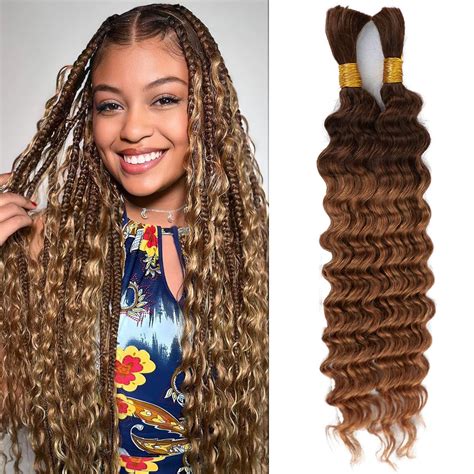Embrace the beauty of braids with our comprehensive guide to 30 braiding hair. From classic cornrows to intricate goddess locs, this article has everything you need to elevate your hairstyle and unleash your creativity.

Benefits of Braiding Hair
- Scalp health: Braids protect your scalp from harsh elements and prevent breakage.
- Versatility: Braids can be styled in countless ways, from elegant buns to funky twists.
- Time-saving: Braids can last for days or weeks, saving you valuable time on styling.
- Damage control: By keeping your hair contained, braids minimize tangles and reduce the risk of split ends.
- Cultural significance: Braids hold deep cultural significance in many communities, representing individuality, strength, and beauty.
Synthetic Braiding Hair
- Kanekalon: Soft and silky, provides natural-looking styles.
- Toyokalon: High-quality and tangle-resistant, offers a wide range of colors.
- Synthetic Afro: Frizzy texture, suitable for creating Afro puffs and dreadlocks.
Human Braiding Hair
- Indian Hair: Smooth and shiny, known for its durability.
- Remy Hair: High-quality hair with intact cuticles, giving it a natural look.
- Virgin Hair: Untreated hair, providing the purest and healthiest option.
- Consider your hair texture: Match your braiding hair to your natural hair type for seamless blending.
- Determine the length: Choose a length that complements your desired hairstyle and personal style.
- Select the color: Choose a color that either matches your natural hair or creates a bold contrast.
- Read reviews: Check customer feedback to ensure the quality and reliability of the hair.
Cornrows
- Straight braids that run parallel to the scalp, creating a sleek and versatile look.
- Can be styled into intricate patterns or simple rows.
Goddess Locs
- Long, thick braids that resemble natural locs.
- Provide a protective hairstyle that promotes hair growth and scalp health.
Box Braids
- Square-shaped braids that add volume and definition to your hair.
- Can be worn long, short, or in various colors.
French Braids
- A classic braid that starts at the crown and incorporates sections of hair as it goes.
- Creates a romantic and elegant look.
- Prepare your hair: Wash, detangle, and section your hair.
- Start the braid: Take three strands of hair from the front section of the head.
- Cross the strands: Cross the right strand over the middle strand and then the left strand over the new middle strand.
- Incorporate new hair: As you braid down, add small sections of hair from the unbraided portion to each side.
- Secure the end: Finish the braid and tie off the end with an elastic band.
- Use a braiding tool: A braiding hook or needle can help separate strands and create tight, even braids.
- Keep your hair moisturized: Apply leave-in conditioner or hair oil to prevent dryness and breakage.
- Don’t braid your hair too tight: Tight braids can cause headaches and damage to your scalp.
- Protect your braids: Wear a bonnet or scarf at night to prevent frizz and tangles.
- Cleanse gently: Wash your braids with a sulfate-free shampoo and conditioner.
- Detangle regularly: Use a wide-toothed comb or brush to gently detangle your braids.
- Moisturize: Apply a leave-in conditioner or hair oil to keep your braids healthy and hydrated.
- Avoid harsh chemicals: Use products that are specifically designed for braided hair to prevent damage.
Braided Headbands
- Create a headband by braiding two thin sections of hair from each side of your head.
- Secure the ends with bobby pins and you’re ready to go!
Braided Bangs
- Braid a small section of your bangs and secure it to the side with a bobby pin.
- This playful twist adds a touch of individuality to your hairstyle.
Braided Pigtails
- Divide your hair into two sections and braid each side.
- Tie the ends together with an elastic band or scrunchie.
- This classic hairstyle is a great way to keep your hair out of your face.
Braided Updo
- Braid your hair into a crown or bun.
- Use bobby pins to secure the braids and create a chic and elegant updo.
- This hairstyle is perfect for special occasions.
Q: How long can I keep my braids in?
A: Synthetic braids typically last for 4-6 weeks, while human hair braids can last up to 8-12 weeks.
Q: Can I braid my hair if it’s short?
A: Yes, there are braiding techniques suitable for shorter hair lengths. Consult with a professional stylist for guidance.
Q: Is it okay to braid my hair if I have natural hair?
A: Yes, braiding can help protect and style natural hair, but avoid braiding your hair too tightly to prevent damage.
Q: How often should I wash my braids?
A: Washing your braids once or twice a week is recommended to maintain cleanliness and prevent buildup.
Embracing the art of braiding hair unlocks a world of endless possibilities. From protective hairstyles to stunning updos, 30 braiding hair offers versatility, style, and endless creativity. By choosing the right hair, mastering braiding techniques, and caring for your braids effectively, you can elevate your look and embrace the beauty of this timeless tradition.
